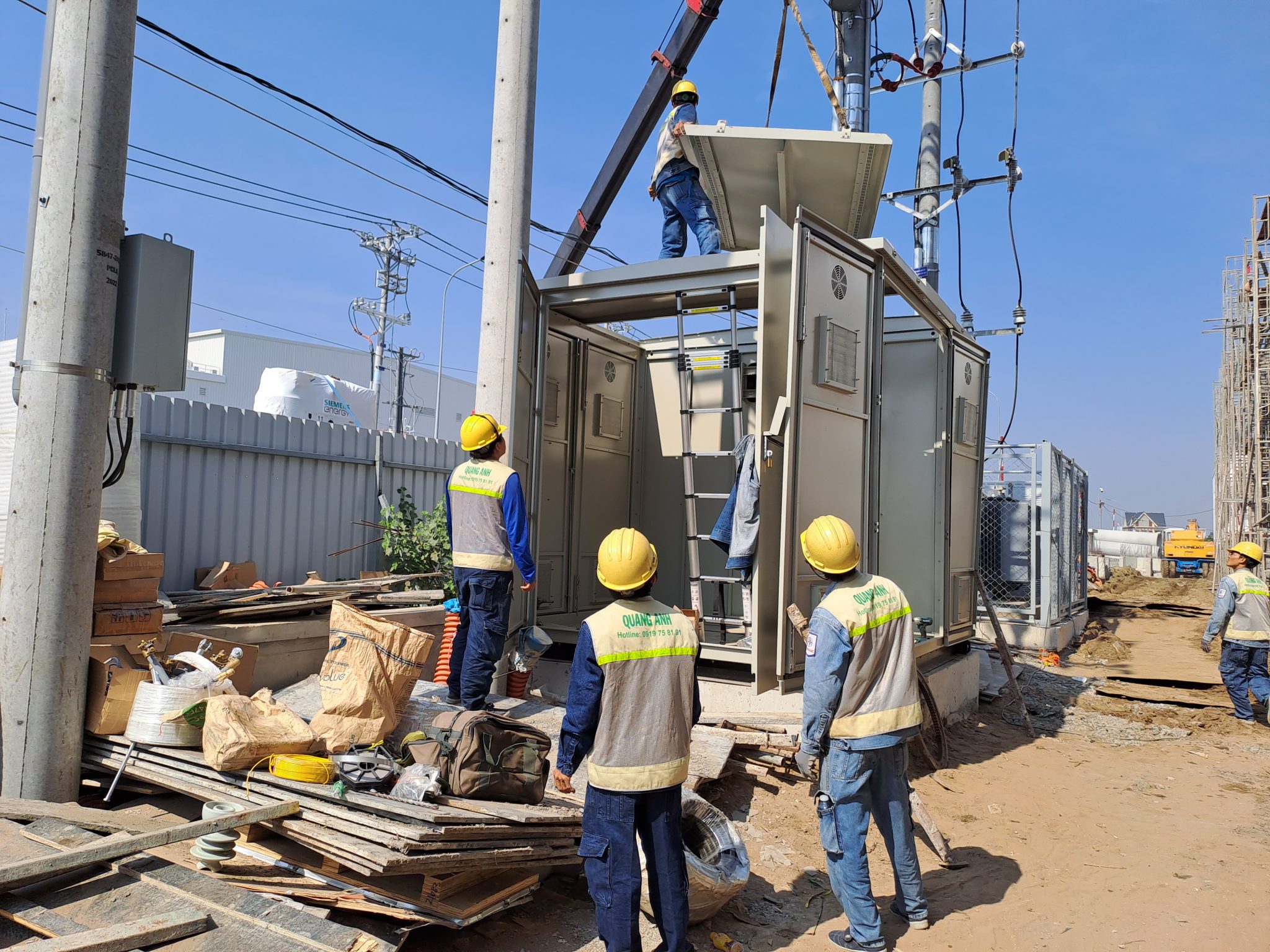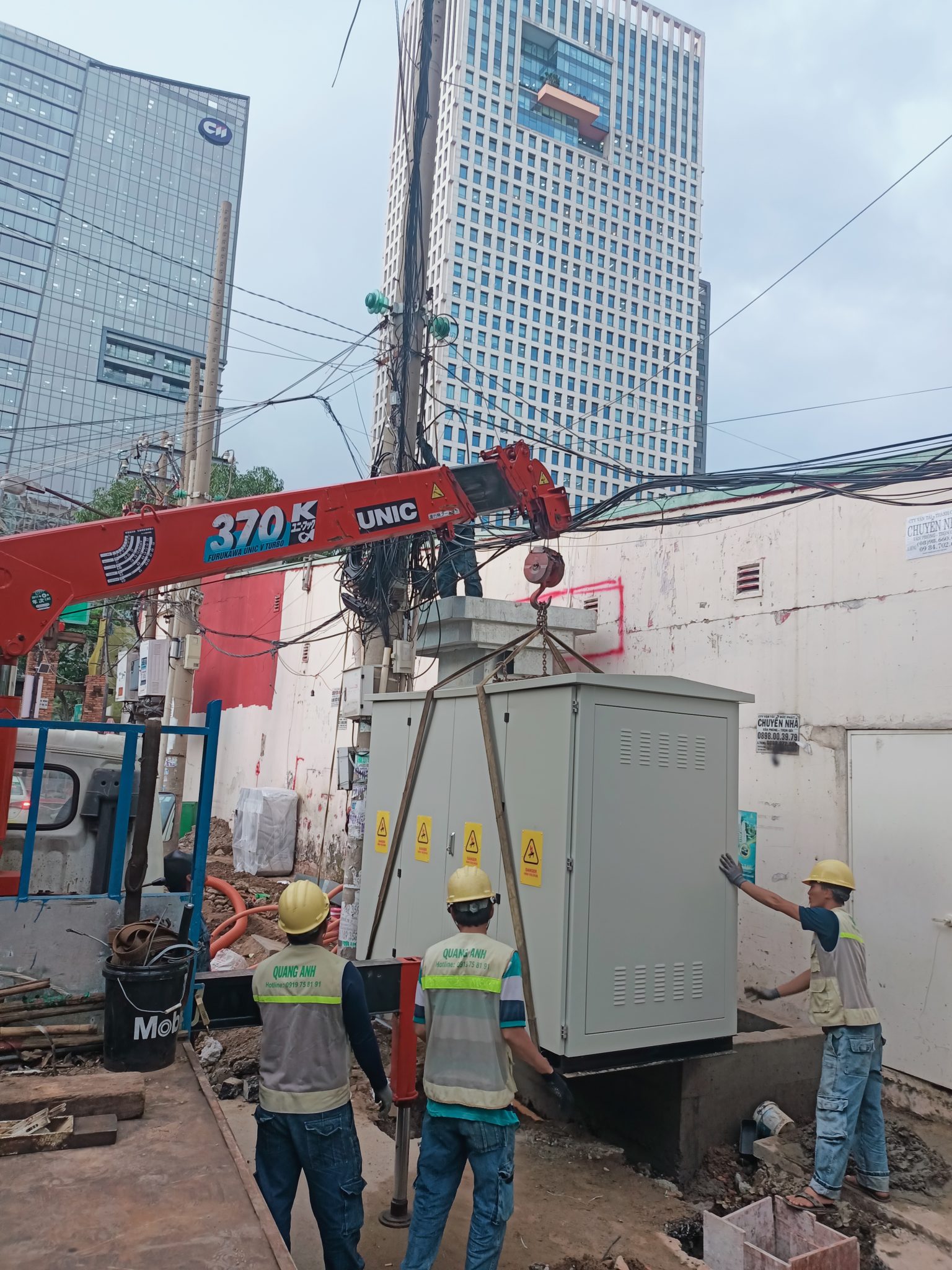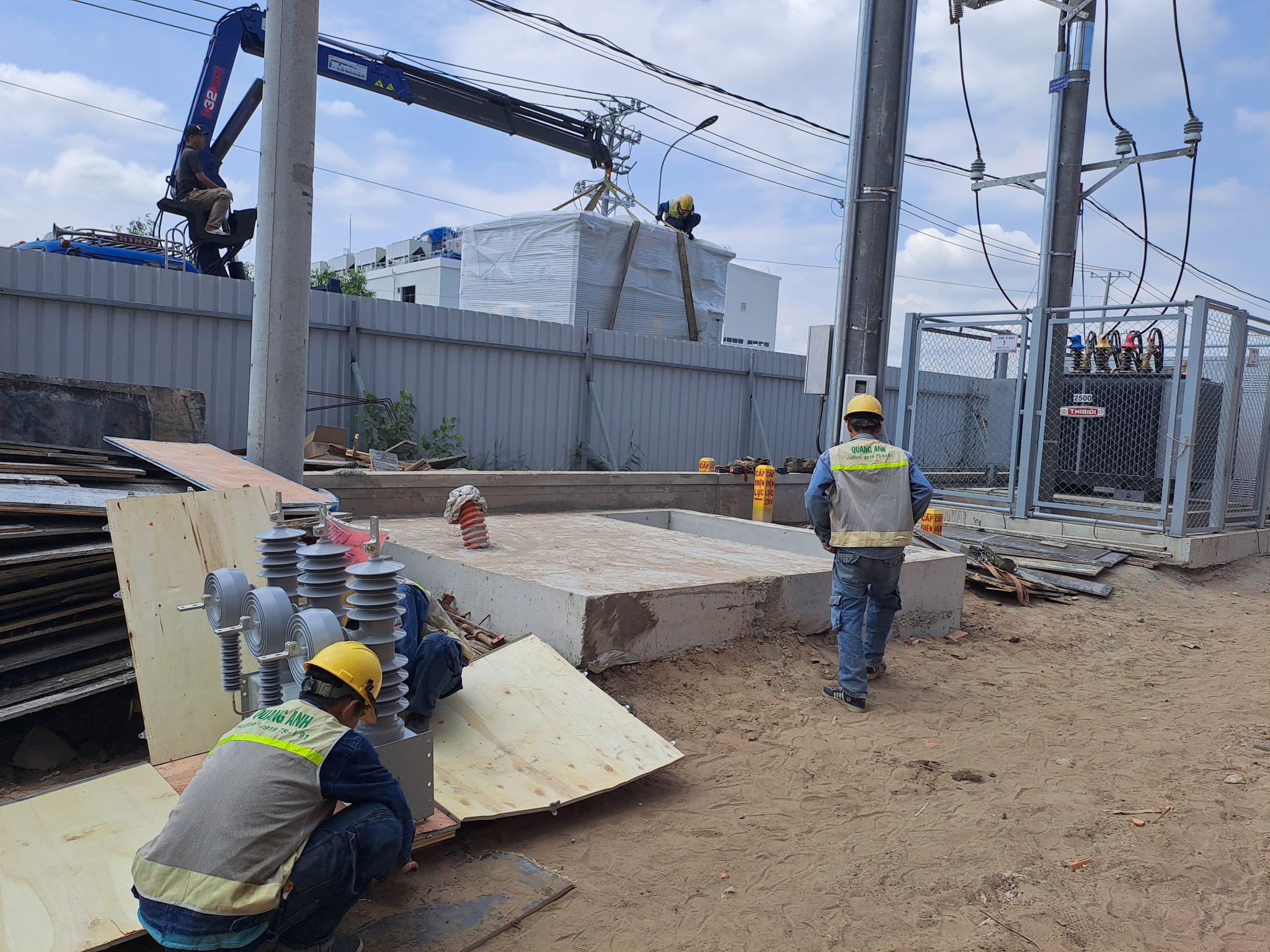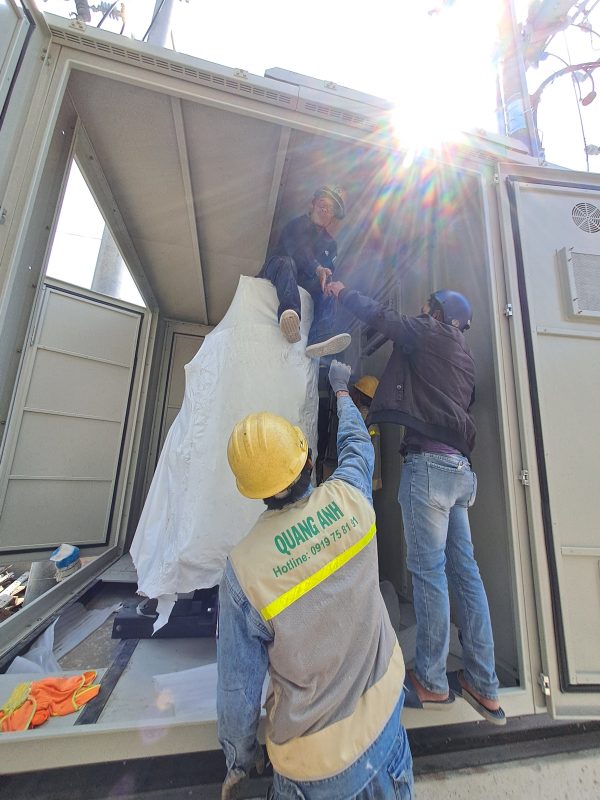Maintaining a factory’s electrical system is vital to ensure consistent operation and safety, optimizing production through careful planning, execution, and assessment.
Preparation Before Maintenance
Preparing for factory electrical system maintenance involves ensuring electrical safety through complete protective gear and isolating maintenance areas. This prevents risks to people and property during electrical system maintenance.
For effective and safe electrical system maintenance, detailed preparation is necessary. Detailed maintenance planning not only optimizes resources but also minimizes potential risks. The steps include:
1. Plan Development
- Risk Assessment: Before electrical system maintenance, evaluating potential risks is crucial. This allows for a swift response plan to mitigate damages. It is essential to choose an appropriate timing, often when equipment is idle, or during scheduled maintenance. Effective communication with stakeholders is also vital.
2. Proposal and Approval
- Detailed Proposal: Develop a detailed proposal including schedules, personnel, and required materials. This proposal should be submitted to relevant departments, such as administration, at least three days before starting to allow ample time for approval and preparation.
3. Equipment and Material Preparation
- Tool Gathering: Ensure maintenance tools are ready. Before commencing work, inspect the condition of equipment and tools to protect labor safety.
4. Workplace Safety Assurance
- Security and Cleanliness: Ensure the working area is safe to block unauthorized access and maintain ventilation to prevent hazardous substances. Setting up a safe route for workers creates ideal working conditions.
5. Equipment Shutdown
- System Shutdown and Power Cut: Stopping equipment operation and cutting off power are crucial steps to ensure safety and prevent accidents.
6. Maintenance Scheduling
- Based on Technical Specifications: Maintenance scheduling should be based on technical specifications and actual experiences. Calculate time and maintenance frequency for optimal system performance.
Detailed preparation before factory electrical system maintenance not only maximizes work efficiency but also ensures labor safety. Careful planning and thorough execution of each stage are keys to success.

Executing Maintenance: Essential Steps
Conducting factory electrical system maintenance includes not just technical inspections but also cleaning electrical equipment. Key steps involve checking insulation resistance, circuit continuity, and dry transformers while removing accumulated dust and grease.
Routine maintenance is crucial for the efficient functioning of electrical systems. This maintenance process follows specific steps designed to ensure quality and safety. Here are the necessary steps in the electrical system maintenance process:
- Planning: Initially, clearly define the maintenance goals and focus areas to concentrate on the most critical parts of the electrical system. Gathering information on operational history, current conditions, and technical requirements of the equipment is necessary to pinpoint key focus areas.
- Proposal Creation: Next, draft a maintenance proposal using standardized forms, accompanied by a plan for a holistic view of the project. This proposal must be sent to the administration for consideration at least three days before maintenance begins.
- Information Confirmation and Approval: Post proposal reception, the administration reviews and approves based on the logic and reliability of the information, ideally not exceeding three working days.
- Maintenance Preparation: The next task is to adequately prepare all documentation and communicate with suppliers for maintenance execution. This stage also covers necessary personnel and material preparations.
- Maintenance and Servicing Execution: Following the approved plan, carry out all tasks related to maintenance and servicing. Ensure that the execution progresses as scheduled to avoid disrupting the electrical system’s operation.
- Inspection and Evaluation: Ultimately, post-completion, inspect and evaluate the maintenance results. This includes checking resistance, circuit continuity, and transformers to ensure everything operates stably. Additionally, provide recommendations for subsequent maintenance.
This meticulous process not only prevents potential issues but also maintains optimal system performance.

Documentation, Reporting, and Process Improvement
Documenting factory electrical system maintenance activities saves issues and actions taken, then analyses the root causes of problems and evaluates future maintenance process improvements.
In the context of modernization and automation in the electrical industry, documenting, reporting, and process improvement become crucial in ensuring continuous and optimal system operation. To facilitate this process, using proper forms and standard processes is necessary.
Standard Recording Forms
Maintaining standard report forms per Decision 2429 helps not only track activities but also guide improvements. Notably among these are:
- Activity Improvement Log: Direct performers must record goals and trial completion times to evaluate the efficiency of improvements.
- Improvement Proposal Form: This effective tool analyzes current issues and suggests necessary organizational changes.
Improvement Reporting Process
A professional improvement process follows seven reporting steps from defining the purpose to finalizing the report. Thorough research and data analysis using graphs like Pareto ensure practical and measurable solution proposals.
Improvement Methodology
Using PDCA tools forms the basis of continuous improvement (CIP). The PDCA process includes Plan, Do, Check, and Act steps for continuous activity enhancement through testing and evaluation, requiring detailed recording.
Support Tools
Tools like the Ishikawa diagram and digital record-keeping enhance accuracy and effectiveness in root cause analysis. Additionally, integrated checklists within records help monitor and ensure compliance with process improvements.
Deployment Recommendations
To ensure new process efficacy, internal training on digital record-keeping is necessary alongside establishing KPIs to measure form quality and completion speed.

Adhering to factory electrical system maintenance processes ensures not only operational efficiency but also serves as a smart investment strategy, safeguarding assets and enhancing production safety. Continuous improvements based on data optimize performance and extend system lifespan.
To enhance safety and effectiveness in factory electrical systems, contact QuangAnhcons at Hotline: +84 9 1975 8191 for expert advice and support.
QuangAnhcons specializes in providing comprehensive factory electrical system maintenance services, ensuring the highest safety and efficiency for customers’ production activities.
[contact-form-7 id="7239967" title="Contact form 1"]


Related Posts
Tay Ninh Solar Power Planning: Technical Framework, Grid Interconnection, and Rollout Roadmap
Technical overview of solar planning in Tay Ninh: irradiation, grid capacity, permitting, design, operations, and [...]
Dec
Binh Duong Solar Planning: Regulatory Framework, Grid Interconnection, and an Implementation Roadmap for Factories and Industrial Parks
An overview of Binh Duong solar planning: legal framework, interconnection, design, risk management, and an [...]
Dec
Solar Farm Repair: O&M Workflow, IV Curve Diagnostics, Thermography, Inverter Service and Utility-Scale Safety
A utility-scale solar farm repair plan centered on O&M, IV curves, thermal imaging, inverter service, [...]
Dec
Dong Nai Solar Power Plan 2023–2025: Tri An 1,029 MW, Grid Upgrades and the DPPA Pathway
A complete look at Dong Nai’s solar power plan: Tri An 1,029 MW, irradiation potential, [...]
Nov
Quang Ngai Solar Power Plan 2024–2030: Legal Framework, Irradiance Potential, and Development Roadmap
A complete look at Quang Ngai’s solar power plan: capacity targets, irradiance (PVout), development zones, [...]
Nov
Solar Damage Assessment Services: On-Site Procedures, EL/IV/Thermography Testing & Compliance with Standards
Discover IEC/UL/NEC standard solar damage assessment processes: on-site evaluation, EL and IV curve testing, thermal [...]
Nov
Comprehensive Package Estimate for a 1800MVA 500kV Substation: Scope, Configuration 3x600MVA, Standards and Timeline Management
An overview of the 1800MVA 500kV substation estimate: construction scope, configuration 3x600MVA, GIS/AIS, SCADA, standards, [...]
Nov
Factory Electrical Systems: Comprehensive Design and Implementation Guide
Discover the detailed and safe process of factory electrical systems design and implementation. [...]
Oct
Blueprints Required for Factory Construction Permits
Discover the necessary blueprints in factory construction permit applications, from floor plans to electrical and [...]
Oct
What Are the Requirements for a Factory Construction Permit? A Comprehensive Guide
Explore the documentation and steps needed to secure a factory construction permit for streamlined project [...]
Oct
Factory Construction Permit Procedures in Vietnam: Essential Guidelines and Documents
Learn the procedures for securing a factory construction permit in Vietnam, focusing on document preparation [...]
Oct
Key Steps in the Factory Construction Process
Discover the essential steps and requirements for building factories. [...]
Oct
Comprehensive Electrical Substation Solutions by Quanganhcons
Discover the cutting-edge electrical substation solutions offered by Quanganhcons for industrial applications. [...]
Oct
Investment Costs for a 1MWp Solar Power System and Influencing Factors
Explore the investment costs for a 1MWp solar power system in Vietnam and the influencing [...]
Sep
QuangAnhcons: Elevating Wind Energy Solutions
Explore QuangAnhcons' leadership in wind energy and renewable solutions in Vietnam. [...]
Sep
Electrical Contractor Strategies at Becamex Industrial Park
Discover the strategic advancements and partnerships of the electrical contractor at Becamex Industrial Park. [...]
Sep
Investment Insights for 1MW Wind Energy in Vietnam: Costs and Opportunities
Discover the detailed analysis of costs and opportunities for investing in 1MW wind energy projects [...]
Sep
Advanced Electrical Installation Solutions by QuangAnhcons
Explore advanced electrical installation solutions and modern technology with QuangAnhcons. [...]
Sep
Enhancing Industrial Electrical Services with Quanganhcons
Discover Quanganhcons' expertise in industrial electrical services, offering efficient and sustainable power systems. [...]
Sep
Comprehensive MEP Solutions by QuangAnhcons: From Design to Maintenance Excellence
Discover optimal MEP solutions with QuangAnhcons, dedicated to excellence from design through maintenance. [...]
Sep